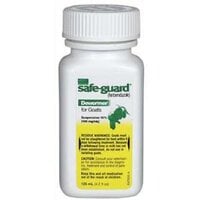There is a very broad range of 'normal' in a lot of chicken things. Very few things are totally cut and dried with only one 'right' answer. If everyone is acting normally, eating, drinking, no one acting off, then just some observation is needed, make sure nothing changes for the worse. If it gets worse, rather than better, or someone doesn't look quite right, then more investigation is needed. But diet, and changes in the diet, can cause all sorts of changes in color and consistency of droppings. They find different things to eat in different seasons, which can lead to sudden changes. Berries often cause concern as they are mistaken for blood in droppings. Feeding whole grains and seeds (and especially corn) can sometimes be an issue, they can pick and choose parts they like and leave the rest, which can sometimes cause imbalances. It can also reduce their intake of the other feed. It's a really good idea to keep all the extra's (everything except pellets or crumbles) to 10% or less of their total diet.
I know it's talked about everywhere, but diatomacious earth does not help with internal parasites. It works when it's dry, not wet, and the inside of a chickens gut is wet. It's really a waste of time and money, and not worth the respiratory irritation that it could cause from breathing the dust. Ivermectin is also not the best option for worming, some parasites are becoming resistant to it. So next time you worm it would be better to use Safeguard (either the liquid goat wormer or the horse paste) or Valbazen. Both of those work well on everything except tapeworm. Since everyone is seemly acting normally, I don't think you need to be too concerned, just continue to watch as always, for anything that might change.
In my flock when I see increased intestinal shed, it's usually roundworm. My environment has a heavy worm load. So I worm regularly to keep them healthy. Every flock is different, every environment is different.
I know it's talked about everywhere, but diatomacious earth does not help with internal parasites. It works when it's dry, not wet, and the inside of a chickens gut is wet. It's really a waste of time and money, and not worth the respiratory irritation that it could cause from breathing the dust. Ivermectin is also not the best option for worming, some parasites are becoming resistant to it. So next time you worm it would be better to use Safeguard (either the liquid goat wormer or the horse paste) or Valbazen. Both of those work well on everything except tapeworm. Since everyone is seemly acting normally, I don't think you need to be too concerned, just continue to watch as always, for anything that might change.
In my flock when I see increased intestinal shed, it's usually roundworm. My environment has a heavy worm load. So I worm regularly to keep them healthy. Every flock is different, every environment is different.



